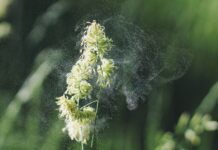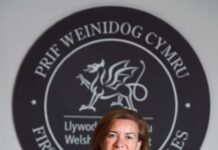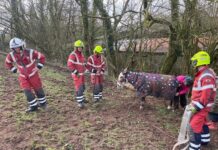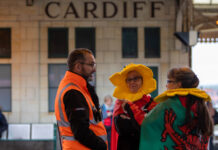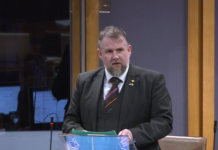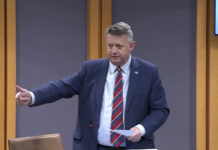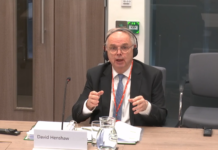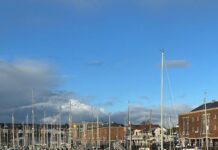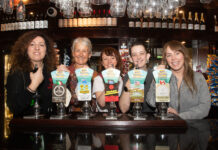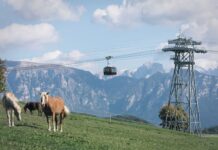
s part of National Tree Week, Mayor Andy Burnham will “Plant a tree for the Jubilee” and unveil Greater Manchester as the first QGC “Champion City” in Stockport on Saturday 4th December.
Greater Manchester is the first place to be unveiled as part of The Queen’s Green Canopy (QGC) “Champion Cities” programme, which has been launched to celebrate some of the nation’s outstanding cities which have trees as a central part of their plans for green spaces.
Mr Burnham will plant a tree to reflect Greater Manchester’s ambitious target to plant three million trees and become carbon neutral by 2038. Greater Manchester has developed strong green infrastructure plans and projects across the 10 districts, where over one million people live in areas among the 20 percent most deprived in England.
The Mayor will plant the tree and launch the QGC “Champion Cities” initiative at a community event at Gatley Hill in Stockport hosted by the City of Trees, in partnership with Stockport Metropolitan Borough Council and the Greater Manchester Combined Authority.
Tree planting in Gatley Hill is particularly important for helping to intercept rainwater and increase infiltration into the ground, helping to reduce the volume of water entering the site’s adjacent brook – a known cause of flooding downstream in Gatley Village.
Andy Burnham, Mayor of Greater Manchester, said:
“We all take pride in the fact that Greater Manchester has been named as a Queen’s Green Canopy Champion City. It is recognition of all the work partners across the city-region have been doing to plant even more trees where they will bring the most benefit for our communities and our environment. We’re planting a tree for every citizen of Greater Manchester through our City of Trees movement, and I would encourage everyone here to get involved in whatever way they can.
“National Tree Week has been a reminder of the importance of nature and biodiversity. Trees can help our residents breathe cleaner air, reduce the risk of flooding, and store carbon, helping us meet our climate ambitions. They are a vital part of our wider plans to improve Greater Manchester’s natural environment, which include the creation of a new public park in Mayfield, restoration of our peatlands, and adopting nature-based solutions in our urban areas to help us adapt to climate change and recover nature.”
Local residents and volunteers who are interested to get involved in tree planting in Stockport on Saturday 4th December are invited to register here: https://bit.ly/3ruYwlX
The launch will be followed by an event to celebrate Leicester on Sunday 5th December. Other UK cities which have been awarded QGC “Champion” status so far include Belfast, Cardiff, Chester, Edinburgh, Glasgow, Newcastle, Preston, Swansea, Southampton, Worcester and York.
The QGC looks forward to hosting events to celebrate each Champion City in due course.
Background
As part of its work to highlight urban greening initiatives, the QGC invited cities from across the United Kingdom to apply for “Champion City” status. The initiative seeks to celebrate UK cities which have trees and woodlands as a central part of their plans for green spaces, for example in the form of a dynamic green recovery plan or green city charter, as well as community-oriented environmental projects.
Greater Manchester
Greater Manchester has set out ambitious plans for its environment which have been recently recognised in being one of only eleven places in the UK to achieve an A rating from international climate research provider CDP and being selected as one of only four cities to be selected as a Resilience Hub under a UN initiative.
Greater Manchester has plans to plant three million trees – one for every citizen of the city-region. This is being led by City of Trees, the Community Forest for the city-region. This approach and their significant experience means that trees are only planted where it is the right thing to do, that the right trees are planted in those places and that they are maintained over time to make sure that they thrive. Communities and volunteers are engaged in these activities.
This is part of wider plans and projects to enhance Greater Manchester’s natural environment, including:
- Restoring over 500ha of habitats across the city-region through the Greater Manchester Environment Fund, helping build a nature recovery network.
- Work by partners to engage more people in the natural environment, for example at the new gardens at RHS Bridgewater and in the plans in Oldham to create the UK’s largest urban farm and eco park (“Northern Roots”) on 160 acres of green space.
- Developing the case for investing in nature-based solutions through the IGNITION project, including the £1m Living Lab at the University of Salford showcasing green walls, street trees and a rain garden.
- Connecting people with nature-based activities such as food, growing community gardening and tree planting, through a £500,000 “green social prescribing” project, improving mental health and wellbeing and the natural environment at the same time.
Key facts and figures:
- There are an estimated 11,321,386 trees with 15.7 per cent of Greater Manchester beneath tree canopy
- The total annual economic value of filtering air pollution, reducing water flows during storms and storing carbon is £33,298,891
- Approx. 1 million trees are in danger of being lost in Greater Manchester due to pests and diseases such as Ash Dieback
- Greater Manchester’s trees act as a filtration system for harmful air pollutants – removing 847 tonnes of pollutants each year.
- They assist with excessive storm water, intercepting 1,644,415 cubic metres of storm water run-off per year.
- They sequester 56,530 tonnes of carbon each year and the current carbon of all the trees in the region is 1,573,015 tonnes.
- It would cost over £4.7 billion to replace all Greater Manchester’s trees
- They produce 122,450 tonnes of oxygen each year
The tree species to be planted at the Gatley Hill site are a representation of British native species that both complement the existing trees and improve the biodiversity of the woodland. They include: Pedunculate oak, Sessile oak, Hornbeam, Scot’s pine and Field maple, Silver birch, Downy birch, Common alder, Holly, Hazel, Hawthorn, Rowan, Guelder Rose.
The planting site is part of England’s woodland creation programme, Trees for Climate led by England’s Community Forests (of which City of Trees is the region’s community forest), and funded by the government’s Nature for Climate Fund.
The Queen’s Green Canopy
The Queen’s Green Canopy (QGC) is a unique tree planting initiative created to mark Her Majesty’s Platinum Jubilee in 2022 which invites people from across the United Kingdom to “Plant a Tree for the Jubilee”.
Everyone from individuals to Scout and Girlguiding groups, villages, cities, counties, schools and corporates will be encouraged to play their part to enhance our environment by planting trees during the official planting season between October to March. Tree planting will commence again in October 2022, through to the end of the Jubilee year.
With a focus on planting sustainably, the QGC will encourage tree planting to create a legacy in honour of The Queen’s leadership of the Nation, which will benefit future generations.
As well as inviting the planting of new trees, The Queen’s Green Canopy will dedicate a network of 70 Ancient Woodlands across the United Kingdom and identify 70 Ancient Trees to celebrate Her Majesty’s 70 years of service.
By inviting everyone to plant considerable numbers of new trees throughout the country, the QGC seeks to highlight the significant value of trees and woodlands as nature’s simple but highly effective way to clean the air we breathe, slow the impact of climate change, create important wildlife habitats and improve our general health and wellbeing.
- Throughout Her reign, The Queen has planted more than 1,500 trees all over the world and has spoken alongside Sir David Attenborough of the importance of trees in the Earth’s future.
- The QGC is a voluntary and inclusive initiative which is open to participation by everyone in the UK.
- The QGC is a symbolic gift which involves the voluntary dedication of forests and woodland – there is no land/title transfer.
- The QGC is a not-for-profit initiative, which has not received Government funding.
Further information about the QGC is available: www.queensgreencanopy.org
The Queen’s Green Canopy Partners
Collaboration is central to the QGC. We are proud to work with our partners Cool Earth, The Royal Horticultural Society, The Woodland Trust, Trees for Cities, The Forest Canopy Foundation and DEFRA, The Tree Council, The Conservation Volunteers and Community Forest Trust.
The Queen’s Green Canopy – Platinum Supporters
The QGC is grateful to be working with a select group of Platinum Supporters: Royal Mail Group, Coutts, John Lewis & Partners, Waitrose & Partners, Rentokil Initial, Coupa, Regatta and Craghoppers, Bridgepoint, Howdens, Johnnie Walker, McDonald’s UK & Ireland.
We are also pleased to be working with Bags of Ethics by Supreme Creations as an Official Supporter.
The Queen’s Green Canopy – QGC Friends Network
A diverse collection of groups located across the UK, our Friends Network is supporting the QGC, from planting trees to helping inspire the nation to get involved.
https://queensgreencanopy.org/about-us/qgc-friends-network/
Help keep news FREE for our readers
Supporting your local community newspaper/online news outlet is crucial now more than ever. If you believe in independent journalism, then consider making a valuable contribution by making a one-time or monthly donation. We operate in rural areas where providing unbiased news can be challenging. Read More About Supporting The West Wales Chronicle









